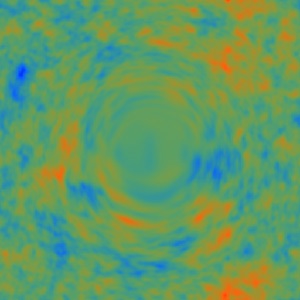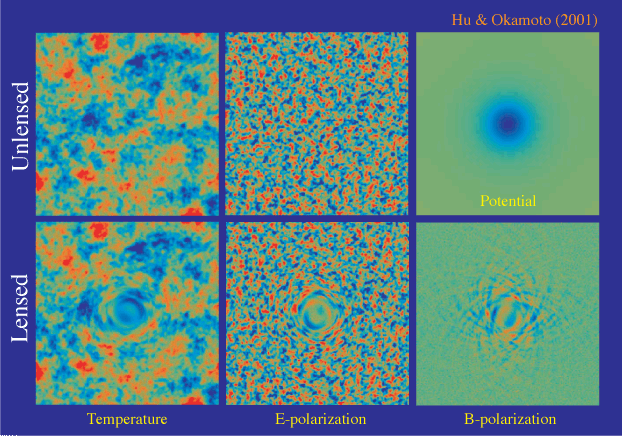
Large scale structure between the last scattering surface and the observer gravitationally lenses the temperature and polarization anisotropy of the CMB. Like cosmic shearing of galaxy images, CMB lensing distorts the hot and cold spots of the temperature field around foreground masses.
Figure: mock example of following a lens as it moves across a background CMB temperature field.
In contrast to cosmic shear, the types of structure that most affect CMB anisotropy are long wavelength, linear density fluctuations. These fluctuations themselves are Gaussian random and hence CMB lensing is lensing of a Gaussian random field by a Gaussian random field.
One result is a bluring of the acoustic peaks as the angular scales associated with the peaks are distorted by the foreground lenses.

Another result is the breaking of the symmetry that keeps the polarization field an E-mode. By warping the polarization maps in a manner that is not related to the direction of polarization, the E-modes becomes B-modes.
Quadratic combinations of temperature and polarization fields can be used to reconstruct the intervening mass distribution with the highest signal to noise eventually coming from the EB combination.
